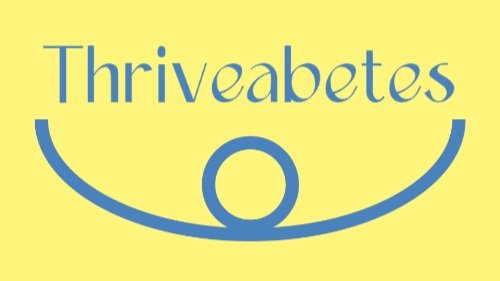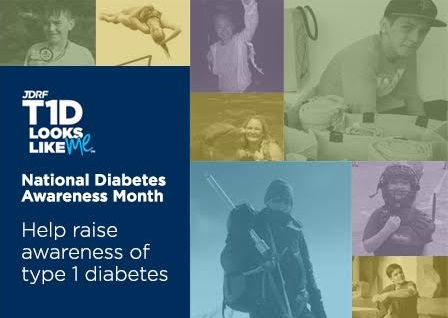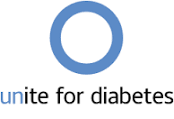For a long time I was a little hesitant to celebrate World Diabetes Day November 14th because I didn't really think diabetes was something to be celebrated. But then I realised that I wasn't celebrating diabetes! I'm celebrating being alive! And celebrating one of the men who is responsible for me being alive, Frederick Banting.
In 1922, only 93 years ago, Frederick Banting, Charles Best and John James Rickard Macleod, first conceived the idea which led to the discovery of insulin.
Since 1991 when the IDF and the WHO made World Diabetes Day a "thing" it has grown enormous. And this year there are SO MANY things you can do to mark the event.
Here's a few that caught my attention but there are loads, LOADS more;
The Big Blue Test
The Big Blue Test is a diabetes awareness initiative that was started 7 years ago by an American non-profit organisation, called the Diabetes Hands Foundation (amazing organization worthy of another post). The BBT is about how one small change can have a huge impact on your health; if you have diabetes or not.
And every BBT logged raises money for those with diabetes who are less fortunate than us.
 Not only is The Big Blue Test creating awareness about diabetes, it's also encouraging people who don't have diabetes to exercise and it's creating awareness in our own community about how effective even a little bit of exercise is as a diabetes management tool.
Not only is The Big Blue Test creating awareness about diabetes, it's also encouraging people who don't have diabetes to exercise and it's creating awareness in our own community about how effective even a little bit of exercise is as a diabetes management tool.
And, by participating in the Big Blue Test, we get to help people living with diabetes who are in need with grants for life-saving diabetes supplies, treatments and patient education, usually in developing countries. Follow this link if you would like to take the Big Blue Test and help others.
#T1DLOOKSLIKEME
On Nov. 1, the JDRF launched an online campaign called T1D Looks Like Me, that includes a photo generator for people to add to a social wall collection of other #T1DLooksLikeMe photos. It was really cool to open my Facebook newsfeed on Monday morning and see all the blue profile pics.
They explain: “This year during the month of November, we will be using our JDRF community as megaphones to empower and engage the entire global T1D community. Through our new campaign... we will showcase the faces and stories of people who feel the real impact of T1D day in and day out. T1D looks like the high school basketball player who checks his blood sugar on the bench during his game. T1D looks like the race car driver who at 225 MPH is at the top of his career and won’t let this disease stop him. T1D is a complicated, tiring, and unpredictable disease that too many of us know too well. T1D Looks Like Me shows and shares the many ages, stages and triumphs of the T1D community. Our shared vision of creating a world without T1D is what binds all of us together and what better month to kick-off this campaign than November.”
Blue Circle Selfie
International Diabetes Federation's created the blue circle as the world symbol for diabetes. And to build up it's recognition they created the WDD selfie app to promote the blue circle in a fun way.
How to use the app:
- Download it for IOS (Apple) or Android (click on IOS or Android or scan the QR code below)
- Allow WDD to use your picture to make sure it is shared on our WDD pages
- Take a selfie
- Move the blue circle around your face or be creative
- Share it online with your friends and add a personal message to it
Promote Healthy Eating with IDF
 The International Diabetes Federation (IDF) is an umbrella organisation of over 230 national diabetes associations in 170 countries and territories. It represents the interests of the growing number of people with diabetes and those at risk. The Federation has been leading the global diabetes community since 1950.
The International Diabetes Federation (IDF) is an umbrella organisation of over 230 national diabetes associations in 170 countries and territories. It represents the interests of the growing number of people with diabetes and those at risk. The Federation has been leading the global diabetes community since 1950.
The IDF is responsible for the official marking of World Diabetes Day which they initiated in 1991.
This year they have lots going on including a healthy eating campaign to emphasis that it is an important part of managing all types of diabetes.
Hope in the Hand
D-Mom, Cathy Knight KcConkey, wanted to show children with type 1 diabetes they’re not alone. Since 2009, she’s been encouraging others to write “Hope” on their hand, take a photo of it, and post the picture on Facebook. You can do this any day of the year, but just be sure to do it on World Diabetes Day!
Project Blue November
Ever wonder what amazing things a group of mothers can do? (No, cos, I know that women run this world:-) This group founded by D-Moms will be doing a tweet a day to raise awareness. They have a whole list of hashtags you can use each day in November, as well as posting a picture on Instagram each day.
So many options, how do you choose?


